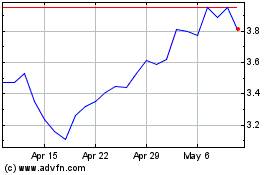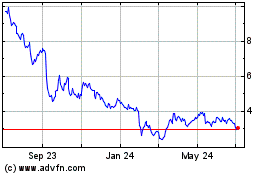Access to abundant U.S. natural gas via pipeline driving
investment on Texas-Mexico border, fueling opportunities for
midstream, power generation and petrochemicals
The recent opening of the Mexican upstream energy industry,
combined with access to abundant U.S. natural gas feedstock from
Texas, is driving significant energy infrastructure investment on
both sides of the border. That infrastructure, along with planned
access to more competitively priced electricity promised by the
reforms, is breathing potential for new life into the Mexican
petrochemical industry, which has long relied on imports to meet
its domestic needs, according to new analysis from IHS (NYSE: IHS),
the leading global source of critical information and insight.
This Smart News Release features multimedia.
View the full release here:
http://www.businesswire.com/news/home/20150902005181/en/
Rina Quijada, senior director, Latin
America, at IHS Chemical (Photo: Business Wire)
“After 15 years of stagnation, with no new petrochemical
production capacity installed in the country and several plant
closures, the Mexican petrochemical industry has been overdue for
investment and has had to rely heavily on raw material imports to
meet its need for local production of many chemicals,” said Rina
Quijada, Ph.D., senior director, Latin America, at IHS Chemical.
“In 2014, Mexico imported nearly U.S. $24.5 billion in chemicals
and petrochemicals to meet its domestic needs, according to ANIQ,
Mexico’s petrochemical industry association. However, for some
chemical value chains, such as polyethylene, the import gap is more
dramatic. Last year, Mexico had to import approximately 1.5 million
tons of this widely used plastic, which is about 75 percent of the
country’s polyethylene demand,” she said.
Quijada said that new production capacity is expected to start
up by the end of 2015, reducing import demand for PE in 2016. That
ethylene/polyethylene project, which is a joint venture effort
between Brazilian-based Braskem and Mexican-based IDESA, is located
in the state of Veracruz, and will use ethane as feedstock. “This
new site should be highly competitive,” Quijada said. “Mexico needs
more of this type investment, and we at IHS Chemical anticipate
growth in production capacity of petrochemicals once additional
feedstock is available in the next five to eight years.”
The changes in Mexico’s energy policy are already driving
private investment in the energy infrastructure necessary to
transport U.S. natural gas to Mexico,” Quijada said. “For Mexico,
that gas means access to abundant, competitively priced feedstocks
for petrochemical production. Just as important, it can be used for
production of reliable, cost-competitive electricity, which is
absolutely essential to grow the entire manufacturing base in the
country and to making Mexican petrochemical production cost
competitive.”
Mexican energy reform is driving billions of dollars in planned
midstream investment, as private and state-owned companies seek
access to abundant natural gas production available from key U.S.
energy plays, including the Texas powerhouse known as the Eagle
Ford shale, which extends from South Texas into Mexico. The Los
Ramones (Phase I) pipeline, which came online last December, added
an impressive 2.1 billion cubic feet (BCF) of natural gas per day
of import capacity from Texas. Additional projects totaling 3.45
BCF per day of cross-border natural gas capacity are under
development, and once online, will significantly increase gas
availability in Mexico.
“These pipeline investments are needed to connect the regions
that don’t currently have access to natural gas,” said David
Crisostomo, a natural gas and power analyst at IHS Energy. “As a
result, fuel-oil generation is still being used in regions such as
the northwest, which is more costly than gas. This means Mexican
consumers and manufacturers pay more for electricity when compared
to their U.S. neighbors. Access to more affordable power will not
only enable the petrochemical industry to grow and flourish, but
also many other industries, such as automotive and consumer goods
production,” he said. “The process will take some time, but the
impacts for the Mexican petrochemical industry, the manufacturing
base, and the economy, will be positive, and the power sector is
pivotal to this success.”
The chemical industry is very important for Mexico’s economy and
the country currently relies heavily on imports to meet its need
for many chemicals. In 2014, it accounted for close to 12 percent
of manufacturing, according to the National Institute of Statistics
and Geography (INEGI). However, manufacturing growth in Mexico is
hampered by a lack of reliable supply of competitively priced
electricity necessary for manufacturers to add production capacity
in the country.
According to IHS Energy, Mexico has the third highest amount of
oil reserves in Latin America, relevant natural gas reserves, and
in 2013, was ranked number 10 on the list of the top hosts of
foreign direct investment inflow by the UN Conference on Trade and
Development. However, the absence of relevant investment in
petrochemicals has caused Mexican production figures to grow just
marginally during the last couple of decades, while imports of
chemicals have grown steadily.
“This lack of investment in the petrochemicals sector is due, in
part, to two key challenges faced in the past by the national oil
company Petroleos Mexicanos (PEMEX),” said Raul Alvarez, a
consultant with IHS Chemical. “First, significant fiscal burdens
were imposed on the company, which severely hampered PEMEX’s
ability to invest in major downstream projects outside of E&P.
Second, the resulting lack of economic and technical resources in
Mexico led to the company’s unsuccessful efforts to reverse a
steady decline in oil production, which peaked in 2004, and meant
it was unable to develop its most promising hydrocarbon
basins.”
Consequently, for a long time with few exceptions, (such as
Braskem/IDESA’s ethylene and polyethylene project), Alvarez said,
PEMEX has been unable to engage in long term, competitive
feedstock/basic petrochemicals supply commitments for petrochemical
projects.
Trade statistics show that organic chemicals are the most
important group of chemicals being imported by Mexico (organics
account for close to 85 percent of total chemical imports), and
capacity gaps exist today across and along diverse petrochemical
value chains. Styrene, paraxylene and cyclohexane are just three
examples of petrochemicals that Mexico demands and imports in
significant quantities. The list goes on further downstream, as
demonstrated by imports of plastic resins, such as polymers of
ethylene, polymers of propylene, polymers of vinyl chloride and
engineering plastics. The irony that such capacity gaps often pose
can be further illustrated by using styrenics as an example:
In the mid-1990’s, production of consumer products, appliances,
automotive parts and food packaging products for local consumption
and exports was booming in Mexico, according to IHS. As a result,
significant capacity for the production of polystyrene (PS),
acrylonitrile-butadiene-styrene (ABS), expandable polystyrene (EPS)
and styrenic elastomers was installed in the country. The resulting
total demand for styrene, the main raw material required by these
new plants, greatly exceeded the local supply, forcing the project
owners to import the balance.
“Regarding trade,” Quijada said, “the Mexican petrochemical
industry is increasingly in a trade deficit because domestic demand
is growing, but insufficient local production capacity is being
added to meet demand. While changes are already under way, we
should see significant progress for petrochemical expansion after
2018, when the impacts of Mexico’s energy reform truly begin to
help the country’s petrochemical business grow,” Quijada said.
Quijada will join other chemical, energy and economic experts
from IHS, along with industry leaders to discuss a host of topics,
including the implications of energy reform on the Mexican
petrochemical industry, along with other market dynamics such as
the crude oil price volatility and its impacts on the industry and
region, at the Latin American Petrochemical and Polymers Conference
(LAPPC), scheduled for November 7, in Cancun, prior to annual APLA
meeting.
A pre-conference workshop entitled “Petrochemical Industry
Fundamentals,” will be held Thursday, Nov. 6, 2015. To view the
full conference agenda and register for the workshop and or the
conference, please contact www.ihs.com/LAPPC2015.
To speak with Rina Quijada, David Crisostomo or Raul Alvarez,
please contact Melissa Manning at melissa.manning@ihs.com.
Media Note: An onsite press workroom will be available
for use by media wishing to cover the conference. All workshops are
closed to press. Credentialed media are invited to cover the
conference only, but must register in advance by sending an e-mail
with media credentials to melissa.manning@ihs.com.
About IHS
(www.ihs.com)
IHS (NYSE: IHS) is the leading source of insight, analytics and
expertise in critical areas that shape today’s business landscape.
Businesses and governments in more than 150 countries around the
globe rely on the comprehensive content, expert independent
analysis and flexible delivery methods of IHS to make high-impact
decisions and develop strategies with speed and confidence. IHS has
been in business since 1959 and became a publicly traded company on
the New York Stock Exchange in 2005. Headquartered in Englewood,
Colorado, USA, IHS is committed to sustainable, profitable growth
and employs about 8,800 people in 32 countries around the
world.
IHS is a registered trademark of IHS Inc. All other company and
product names may be trademarks of their respective owners. © 2015
IHS Inc. All rights reserved.
“If you prefer not to receive email messages from IHS, please
email (melissa.manning@ihs.com). To read our privacy policy,
click here.”
View source
version on businesswire.com: http://www.businesswire.com/news/home/20150902005181/en/
IHS Inc.Melissa Manning, +1
832-458-3840melissa.manning@ihs.comorPress Team, +1
303-305-8021press@ihs.com
IHS (NYSE:IHS)
Historical Stock Chart
From Mar 2024 to Apr 2024

IHS (NYSE:IHS)
Historical Stock Chart
From Apr 2023 to Apr 2024
